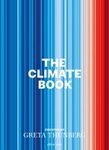![Observing Land from Space: Science, Customers and Technology Observing Land from Space: Science, Customers and Technology]()
Click to have a closer look
About this book
Contents
Customer reviews
Related titles
About this book
This volume offers a broad overview of the science and technology of remote sensing, its policy implications, and the needs of operational users in the context of climate change and environmental degradation over land. The various chapters derive from presentations originally made at the first ENAMORS conference on Optical Remote Sensing of Terrestrial Surfaces: New Sensors, Advanced Algorithms, and the Opportunity for Novel Applications, held in Tuusula, Finland, in September 1997. This meeting assembled a distinguished panel of scientists, engineers, users, and policy makers, and provided a forum to debate scientific priorities, technological opportunities, and information requirements. Policy makers strive to take full advantage of investments in Earth Observation, scientists develop new and better algorithms to deliver more accurate characterizations of the environment, or propose innovative applications, while Space Agencies design observational systems better adapted to meet the requirements of a broad spectrum of scientific missions.
Contents
Preface; M.M. Verstraete, M. Menenti. 1. Welcome address; K. Hemila. 2. Activities of the European Commission in Earth Observation: Part of a common European strategy; A. Cross. 3. The CEO initiatives to collect and analyze user requirements for Earth Observation; J. Verdebout. 4. National strategy for developing Earth Observation applications in Finland; K. Tilli. 5. Operationalization of Earth Observation: Its prospects and requirements; J.S. MacDonald. 6. Remote sensing of forest fires; E. Chuvieco. 7. Using current and future remote sensing systems in natural hazards management; J. San Migual-Ayanz, et al. 8. Examples of the use of satellite data in numerical weather prediction models; J. Noilhan, et al. 9. The contribution of remote sensing technologies and algorithms to land surface processes studies; B. Pinty, M.M. Verstraete. 10. Exploitation and evaluation of retrieval algorithms for geostationary satellite data processing: Current and future systems; Y. Govaerts. 11. The role of remote sensing in land surface experiments within BAHC and ISLSCP; A. Jochum, et al. 12. Earth Observation demands for improved water resources management; W.G. Bastiaanssen, C.J. Perry. 13. A biophysical process-based estimate of global land surface evaporation using satellite and ancillary data; B. Choudhury. 14. Remote sensing of land cover and land cover change; B.K. Wyatt. 15. Land-cover categories versus biophysical attributes to monitor land-cover change by remote sensing; E. Lambin. 16. A new approach to characterize global land surfaces: Preliminary results from AVHRR data; N. Gobron, et al. 17. Remote sensing requirments to support forest inventories; E. Tomppo. 18. Some research and applications in the CSIRO (Australia) Earth Observation Centre on scene brightness due to BRDF; D.L. Jupp. 19. Remote sensing of albedo using the BRDF in relation to land surface properties; W. Lucht, et al. 20. Experimental study of statistical characteristics of plant canopy radiation regime; M. Sulev, J. Ross. 21. Light scattering models and reflectance measurements in remote sensing of snow; R. Kuittinen. 22. Ray optics approximation for random clusters of Gaussian spheres; K. Muinonen. 23. Backscattering of light by snow: Field measurements; J. Piironen, et al. 24. Australian sites for the validation of satellite retrievals of the radiative properties of land surfaces; I.F. Grant, et al. 25. Instruments and methods for the ground-level reference measurement of solar radiation, albedo and net radiation; M. Sulev, et al. 26. The NASA Earth System Science program in 21st century; G. Asrar. 27. ESA's plans and strategy for optical remote sensing of terrestrial surfaces in the next decade; M. Rast. 28. Early results from ADEOS and future Earth Observation missions; T. Igarashi. 29. VEGETATION: An Earth Observation system to monitor the biosphere; G. Saint. 30. Hyperspectral imager survey and developments for scientific and operational land processes monitoring applications; B.P. Kunkel, et al. 31. Summary and conclusions; M.M. Verstaete, M. Menenti. Appendix. List of participants.
Customer Reviews















































